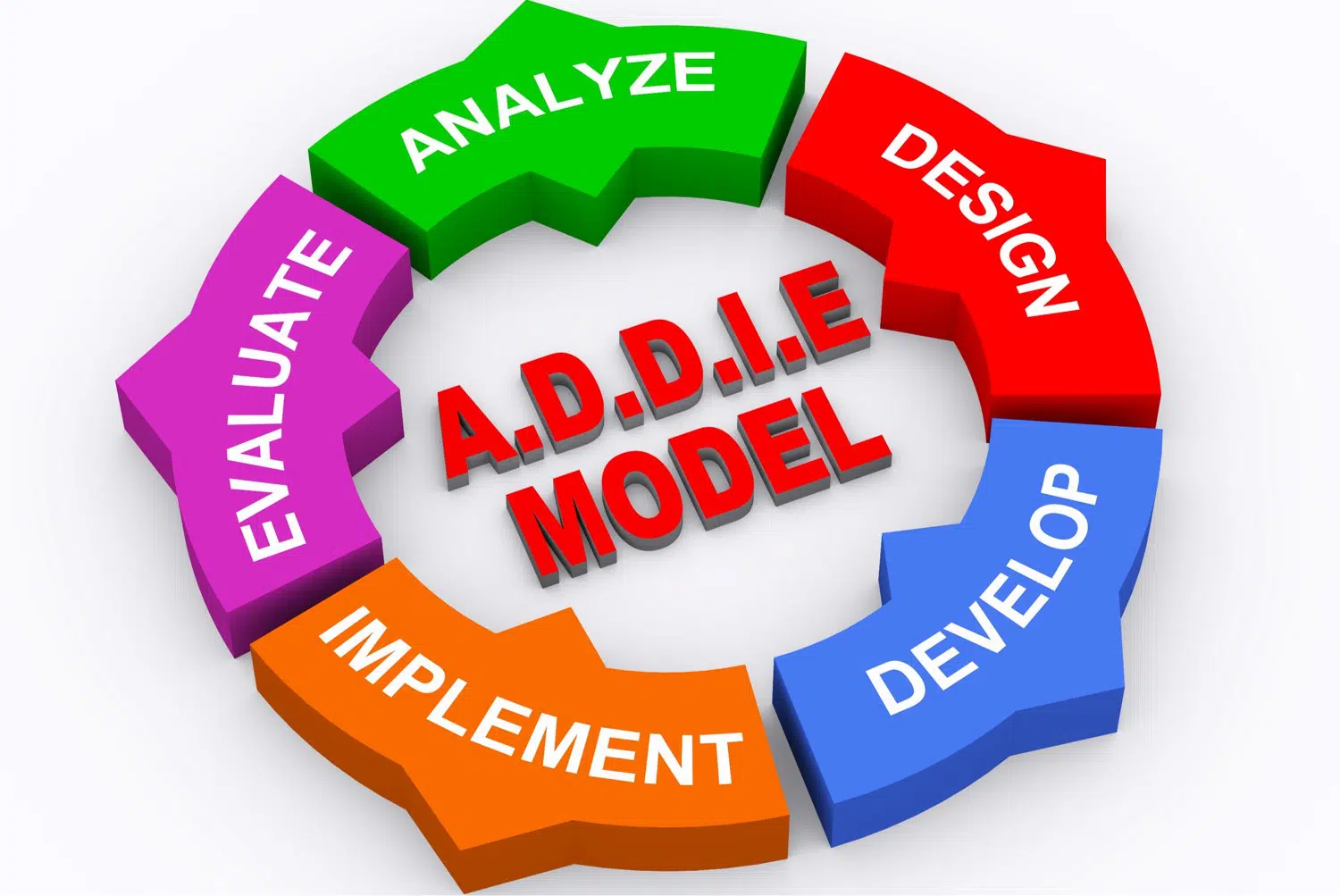ADDIE model has been around in some form since World War II days. It was extensively researched and adapted in the years that followed.
In 1975, it was developed at the Centre for Educational Technology at Florida State University by the U.S. Army. As the technology in warfare advanced, the soldiers needed to be trained to use the innovative machines. This model was later used in business and industrial training.
Initially consisting of 19 steps, they were later brought under 5 phases, namely, Analysis, Design, Development, Implementation, and Evaluation. In the initial days, researchers used each phase as a separate one before moving on to the next. It was straightforward to use, and as the model gained popularity, it began to be used more cyclically. Today, we can adapt it with other models available to suit our needs. In addition to the AADIE model, there are other models of Instructional Design like Gagnes’ Nine Events of Instruction and Merrill’s First Principles of Instruction.
The ADDIE model is considered to be the be all end all in the Instructional design industry. There have been numerous models in recent times that use the ADDIE as their base. However, as the updated hybrid versions dominate the market today, do you even remember the ADDIE model?

ADDIE Model An All-time Favorite
ADDIE: Explained
The ADDIE model is an acronym for Analysis, Design, Development, Implementation, and Evaluation. When each of these phases ends, the next one begins.
-
Analysis:
The instructional needs are clarified in this phase, and the instructional designer asks questions about the target audience, pre-existing knowledge, abilities of the learners, the constraints, and the duration of the learning modules. Once the ID has the answers to these questions, the next phase begins.
-
Design:
This is where the ID gathers the content, examines it, and decides the objectives according to the desired behavioral outcomes. This phase also includes lesson planning and the decision on the kind of media to be used. Storyboards are created, and the ID decides on the look and feel of the learning material.
-
Development:
This is where the developers bring the Instructional designers’ vision to life. They assemble and treat the content in the way decided in the design phase. Further, the programmers and testers work on developing and debugging the project, and then it is sent for review. This is the phase where revisions are made according to the feedback received.
-
Implementation:
The project is now ready to be released to the learners. If the learning is to be conducted via the Learning Management System, the learners are added to the link and can take the course. If there are trainers or instructors needed for the course, they are trained in course delivery and goals. The impact that the course creates is recorded here and analyzed in the next phase.
-
Evaluation:
The instructional designer analyses the learners’ data collected and determines if the course had expected results. If it did not, then a further assessment is made to identify the gaps and rectify them. Moreover, evaluation can be summative or formative. Summative evaluation occurs at the end of the course and determines from learner feedback if the course material was useful. On the other hand, formative evaluation occurs at each stage in the course and can quickly identify learning gaps.
Thus, the ADDIE model is a cyclical model where the instructional designer continuously evaluates and refines the course created.
Let us take a look at the advantages and disadvantages of the ADDIE model.
Advantages of the ADDIE model:
ADDIE is a traditional model. It is commonly used, widely accepted, and provides a foundation for other learning models. Another advantage is that it has proven to be effective for learning. Also, since the larger pieces of the project are planned, it becomes easy to measure the time and cost involved in the project. Moreover, the development of larger units and project management can be easier to evaluate with the ADDIE model.
Disadvantages of the ADDIE model include:
Since it is a linear process, the model is rigid and can be inflexible to adapt to unforeseen project changes. These changes can also be costly to incorporate and can affect the master plan severely. Further, it does not consider political realities. If the resources are unavailable, the entire plan may be difficult to implement. Moreover, the things missed during the first two phases of Analysis and Design may not be picked up or maybe challenging to fit in later. So if the storyboards are poorly designed, they may not come to light until the later stages when making changes can be time-consuming and costly. The ADDIE does not allow for iterative design as it is linear, and there is no redesigning or updating the ideas. Another disadvantage is that the programs created with ADDIE do not identify behavioral changes; they are designed only to meet the measured criteria.





